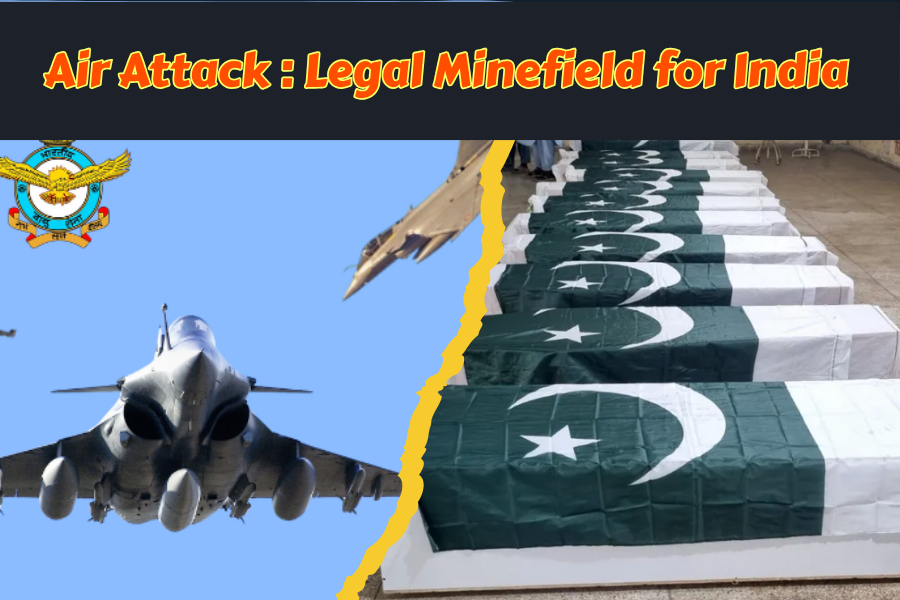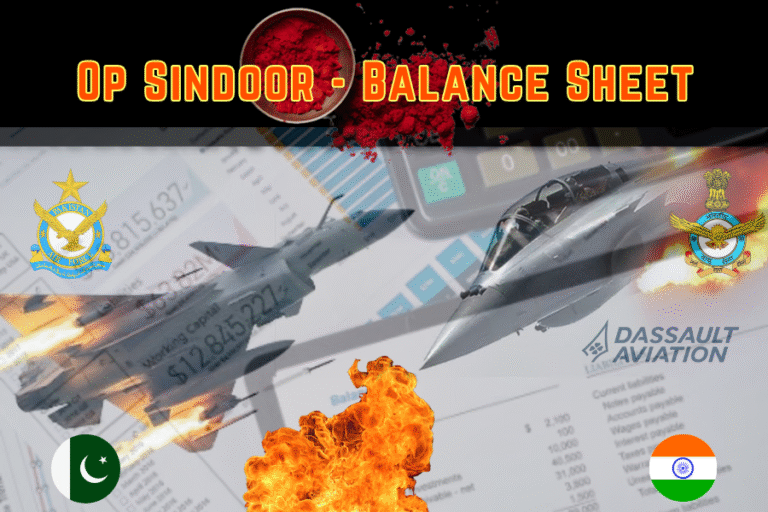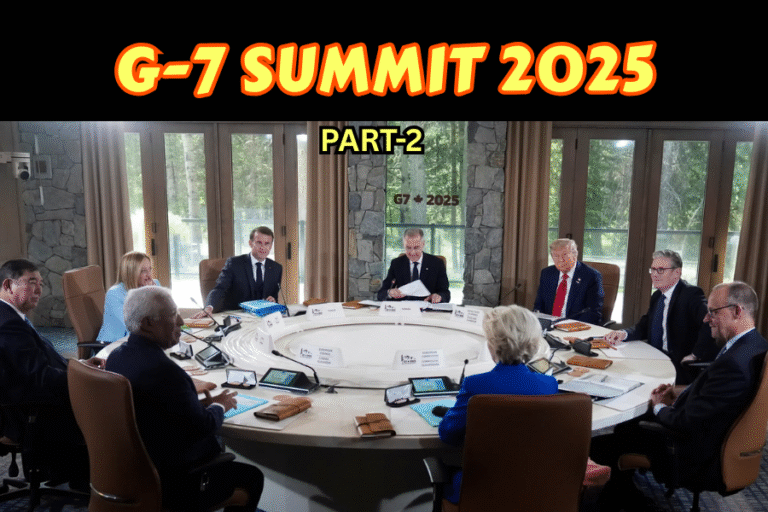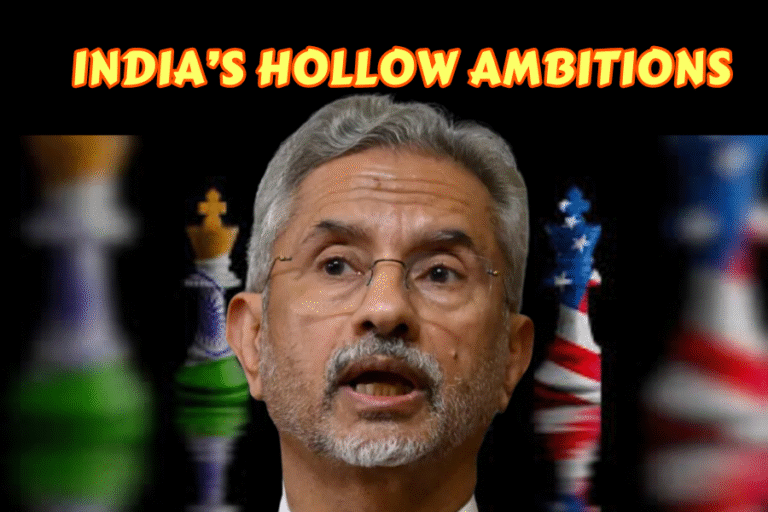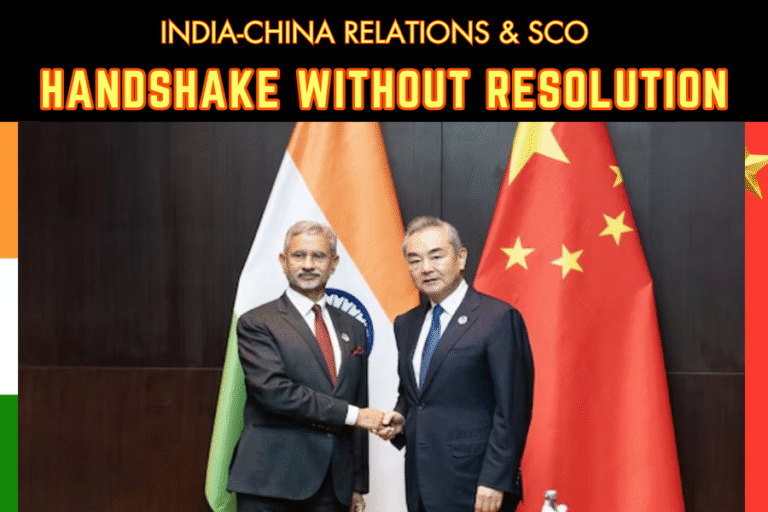(By Khalid Masood)
India’s Use of SCALP-EG Missiles in Operation Sindoor: Violations of EU Arms Export Rules and Options for Accountability
On the night of May 6–7, 2025, India’s Operation Sindoor saw Rafale fighter jets deploy French-made SCALP-EG (Storm Shadow) cruise missiles and HAMMER precision-guided munitions against nine sites in Pakistan and Azad Kashmir, including Bahawalpur, Muridke, and Muzaffarabad. Framed as a retaliation for the April 22, 2025, Pahalgam attack that killed 26 civilians, India claimed the strikes targeted terrorist infrastructure linked to Jaish-e-Mohammed (JeM) and Lashkar-e-Taiba (LeT). However, reports indicate dozens of civilian deaths, including women and children, raising serious allegations of violations of international humanitarian law (IHL) and the European Union’s Common Position 2008/944/CFSP. This article examines India’s actions, their breach of EU arms export criteria, and the European Union’s options for punitive measures, offering recommendations for accountability.
1. Operation Sindoor: Context and Civilian Toll
Operation Sindoor involved coordinated airstrikes by the Indian Air Force (IAF) using Rafale jets equipped with SCALP-EG missiles (450 km range, stealth-enabled) and HAMMER bombs to hit alleged terror camps. Indian sources claimed precision strikes eliminated 100–140 terrorists, including JeM and LeT leaders, without civilian casualties (India Today, May 7, 2025). However, Pakistani authorities reported 26–31 civilian deaths, including eight in Bahawalpur, with strikes hitting a mosque and residential areas (The Guardian, May 8, 2025). Social media posts on X (@DefencePakistan, May 12, 2025) shared images of SCALP-EG debris near Sargodha, suggesting intercepted missiles, while verified reports claimed damage to civilian infrastructure.
India’s assertion that all targets were “Kashmiri freedom fighters or their supporters” lacks independent verification. The UN Office of the High Commissioner for Human Rights (OHCHR) noted in 2019 that India restricts access to Kashmir, hindering impartial assessments. Pakistan’s Inter-Services Public Relations (ISPR) claimed India’s strikes were indiscriminate, a charge echoed by neutral observers (Al Jazeera, May 7, 2025). The absence of transparent investigations fuels allegations of IHL violations, particularly the principles of distinction and proportionality under the Geneva Conventions, which prohibit targeting civilians or causing excessive civilian harm.
2. EU Common Position 2008/944/CFSP: A Legal Framework Breached
The SCALP-EG missile and Rafale jet, produced by MBDA and Dassault Aviation (France), are subject to the EU’s Common Position 2008/944/CFSP, adopted on December 8, 2008. This legally binding framework mandates eight criteria for EU member states assessing arms export licenses, ensuring compliance with human rights, IHL, and regional stability. India’s actions in Operation Sindoor appear to violate several criteria:
- Criterion 2: Respect for Human Rights and IHL: Member states must deny exports if there’s a “clear risk” of serious IHL or human rights violations. The targeting of civilian areas—pleases of worship like Masjids, residential zones—suggests indiscriminate or deliberate attacks, breaching IHL’s distinction principle. Reports of civilian deaths constitute serious violations, implicating France’s due diligence in approving exports to India (eur-lex.europa.eu, 2008).
- Criterion 3: Internal Situation and Armed Conflicts: Exports must consider tensions or conflicts in the destination country. South Asia’s volatility, marked by India-Pakistan clashes (e.g., 2019 Balakot, 2025 Sindoor), was well-documented when France exported Rafales (2016) and SCALP-EGs. Experts, including the Stockholm International Peace Research Institute (SIPRI), warned of risks in arming nuclear-armed rivals, suggesting France overlooked foreseeable misuse.
- Criterion 4: Regional Stability: Exports must not aggravate tensions or contribute to instability. India and Pakistan, with 170 nuclear warheads each (SIPRI, 2025), have a history of escalatory conflicts. Operation Sindoor’s cross-border strikes, triggering Pakistan’s Operation Bunyan al-Marsoos, heightened nuclear risks, as noted by U.S. Vice President J.D. Vance (CNN, May 10, 2025). France’s supply of precision strike capabilities destabilized the region, violating this criterion.
- Criterion 7: Risk of Diversion or Misuse: While primarily addressing re-export, this criterion emphasizes responsible use. India’s use of SCALP-EGs against civilian targets suggests misuse, raising questions about France’s end-use monitoring. Pakistan’s claim of intercepting a SCALP-EG (armyrecognition.com, May 12, 2025) underscores the risk of advanced weapons escalating conflicts.
France’s export decisions, driven by a €7.8 billion Rafale deal (2016), prioritized economic and geopolitical interests over CFSP obligations. The EU’s failure to enforce these criteria reflects a broader trend of prioritizing arms sales to counter China’s influence, undermining its human rights commitments (European Parliament, 2024).
3. Legal and Ethical Questions for the EU
India’s actions raise urgent questions:
- Due Diligence Failure: Did France adequately assess the risk of India using Rafale jets and SCALP-EGs in a volatile region? SIPRI’s 2015–2020 reports flagged India-Pakistan tensions, yet France proceeded with exports, suggesting inadequate scrutiny.
- Foreseeable Misuse: Given India’s history of cross-border strikes (e.g., 2019 Balakot), was civilian harm foreseeable? The SCALP-EG’s precision capabilities, designed to minimize collateral damage, imply deliberate targeting if civilian sites were hit (India Today, May 7, 2025).
- Geopolitical Ambitions: Are EU arms exports driven by a quest for influence in the Indo-Pacific, compromising CFSP principles? France’s strategic partnership with India, cemented by Rafale sales, aligns with countering China but risks fueling South Asian conflicts.
The EU’s credibility as a rules-based actor hinges on addressing these violations. Failure to act undermines its advocacy for human rights and international law, particularly as it seeks a UN Security Council role (European Parliament, 2025).
4. EU Punishment Options for India’s Violations
The EU has several mechanisms to address India’s infringement of Common Position 2008/944/CFSP, ranging from diplomatic measures to sanctions. Below are the options, evaluated for feasibility and impact:
- Option 1: Arms Export Suspension
- Description: Suspend all arms exports to India, including Rafale maintenance, SCALP-EG supplies, and future deals (e.g., additional Rafales, submarines). France, as the primary supplier, would lead, with EU-wide coordination.
- Pros: Signals strong commitment to CFSP criteria, deters future violations, and aligns with IHL obligations. Could pressure India to allow independent investigations into civilian deaths.
- Cons: Economically costly for France (MBDA, Dassault employ thousands) and risks straining EU-India trade (€120 billion annually). India may pivot to Russian or U.S. suppliers, reducing EU leverage.
- Feasibility: Low. France’s strategic partnership with India and economic stakes make a full suspension unlikely. Partial restrictions (e.g., missile exports) are more plausible.
- Option 2: Targeted Sanctions
- Description: Impose sanctions on Indian defense officials, IAF commanders, or entities (e.g., Hindustan Aeronautics Limited) involved in Operation Sindoor, including asset freezes and travel bans.
- Pros: Precise, avoiding broad economic fallout. Signals accountability without alienating India entirely. Aligns with EU sanctions on human rights violators (e.g., Myanmar, 2021).
- Cons: Limited impact on India’s military operations. Risks diplomatic retaliation, such as India expelling EU diplomats or curbing trade. Requires consensus among EU member states, which may be divisive.
- Feasibility: Moderate. Targeted sanctions are politically viable but require evidence of civilian targeting, necessitating UN or NGO reports.
- Option 3: Diplomatic Condemnation and Review
- Description: Issue a joint EU statement condemning India’s actions, demand an independent investigation, and review France’s export compliance via the EU’s Political and Security Committee (PSC). Could include summoning India’s ambassador.
- Pros: Low-cost, preserves trade ties, and reinforces CFSP enforcement. Public pressure may push India to clarify targeting decisions. Review could strengthen future export controls.
- Cons: Symbolic, with minimal immediate impact. India may dismiss criticism, citing sovereignty, as seen in its 2019 Article 370 response. Risks being perceived as toothless.
- Feasibility: High. Diplomatic measures are the EU’s default response, as seen in its 2024 CFSP report (europarl.europa.eu, Feb 4, 2025).
- Option 4: End-Use Monitoring and Export Conditions
- Description: Mandate stricter end-use monitoring for existing exports (e.g., Rafale, SCALP-EG) and impose conditions on future sales, such as IHL compliance certification. France could lead, with EU oversight.
- Pros: Practical, enhances accountability without halting exports. Aligns with Criterion 7’s focus on misuse prevention. Could set a precedent for other EU arms exporters.
- Cons: Requires India’s cooperation, which is unlikely given its opacity (The Wire, May 8, 2025). Resource-intensive for EU agencies. May not address past violations.
- Feasibility: Moderate. Feasible if framed as a technical adjustment, but India’s resistance to external oversight could complicate implementation.
- Option 5: Referral to International Bodies
- Description: Refer India’s actions to the UN Security Council, International Criminal Court (ICC), or OHCHR for investigation into IHL violations. The EU could sponsor a UN resolution or support Pakistan’s claims.
- Pros: Elevates the issue globally, leveraging multilateral frameworks. Could lead to independent probes, clarifying civilian toll. Aligns with EU’s human rights advocacy (europarl.europa.eu, Apr 2, 2025).
- Cons: UNSC action risks vetoes by India’s allies (e.g., U.S., Russia). India is not an ICC member, limiting jurisdiction. Politically sensitive, risking EU-India relations.
- Feasibility: Low. Geopolitical constraints and India’s global clout ($4.27T GDP) make referral unlikely, though OHCHR engagement is plausible.
5. Recommended EU Response
The EU must balance accountability with pragmatic diplomacy, given India’s economic and strategic importance. A multi-pronged approach is recommended:
- Immediate Diplomatic Condemnation: The EU’s High Representative for Foreign Affairs, Kaja Kallas, should issue a statement condemning civilian deaths, demanding India allow UN or OHCHR access to verify targets, and summoning India’s ambassador. This aligns with the EU’s 2024 CFSP report emphasizing human rights (europarl.europa.eu, Feb 4, 2025).
- Export Compliance Review: The PSC should audit France’s Rafale and SCALP-EG export decisions, assessing compliance with Criteria 2, 3, 4, and 7. A public report, per the EU Annual Report on Arms Exports, would enhance transparency (eur-lex.europa.eu, 2008).
- End-Use Monitoring: Impose stricter monitoring on existing exports, requiring India to report SCALP-EG usage. Future exports should mandate IHL training for IAF personnel, reducing misuse risks.
- OHCHR Engagement: Support an OHCHR-led fact-finding mission to Azad Kashmir, leveraging the EU’s human rights defender guidelines (2008). This avoids UNSC vetoes while addressing civilian harm allegations.
- Avoid Sanctions for Now: Targeted sanctions or full export suspensions are premature without conclusive evidence. The EU should await OHCHR or NGO findings before escalating punitive measures.
This approach reinforces CFSP enforcement, pressures India for transparency, and mitigates diplomatic fallout. It responds to Pakistan’s call for an EU investigation, as voiced on X (@znanjiani, May 27, 2025), while maintaining EU-India ties.
6. Broader Implications for EU Arms Policy
Operation Sindoor exposes systemic flaws in EU arms exports:
- Economic vs. Ethical Priorities: France’s €7.8 billion Rafale deal prioritized jobs and influence over IHL risks, a trend seen in EU sales to Saudi Arabia (Yemen conflict). The EU must strengthen PSC oversight to align exports with CFSP values.
- Regional Stability Risks: Arming nuclear-armed states like India fuels escalation, as seen in Sindoor’s near-nuclear scare (CNN, May 10, 2025). Criteria 3 and 4 need stricter application, including pre-export conflict assessments.
- Global Credibility: The EU’s inaction risks undermining its human rights advocacy, particularly as it critiques China and Russia. Consistent enforcement, as urged in the 2024 CFSP report, is critical (europarl.europa.eu, Apr 2, 2025).
The EU should revise Common Position 2008/944/CFSP to mandate independent end-use audits and sanctions for violations, ensuring accountability. Engaging third states like India in CFSP dialogues, as suggested in the 2008 framework, could prevent future misuse (eur-lex.europa.eu, 2008).
7. Conclusion: A Test for EU Principles
India’s use of SCALP-EG missiles and Rafale jets in Operation Sindoor, resulting in civilian deaths, violates the EU’s Common Position 2008/944/CFSP, particularly Criteria 2, 3, 4, and 7. The EU faces a critical test: uphold its legally binding arms export rules or prioritize geopolitical alliances. By combining diplomatic condemnation, export reviews, end-use monitoring, and OHCHR engagement, the EU can hold India accountable while preserving strategic ties. Failure to act risks eroding the EU’s credibility as a global human rights champion, emboldening further violations in South Asia’s volatile nuclear landscape. As Pakistan’s Prime Minister Shehbaz Sharif noted, “The world cannot ignore civilian blood” (Al Jazeera, May 7, 2025). The EU must heed this call to safeguard peace and justice.

